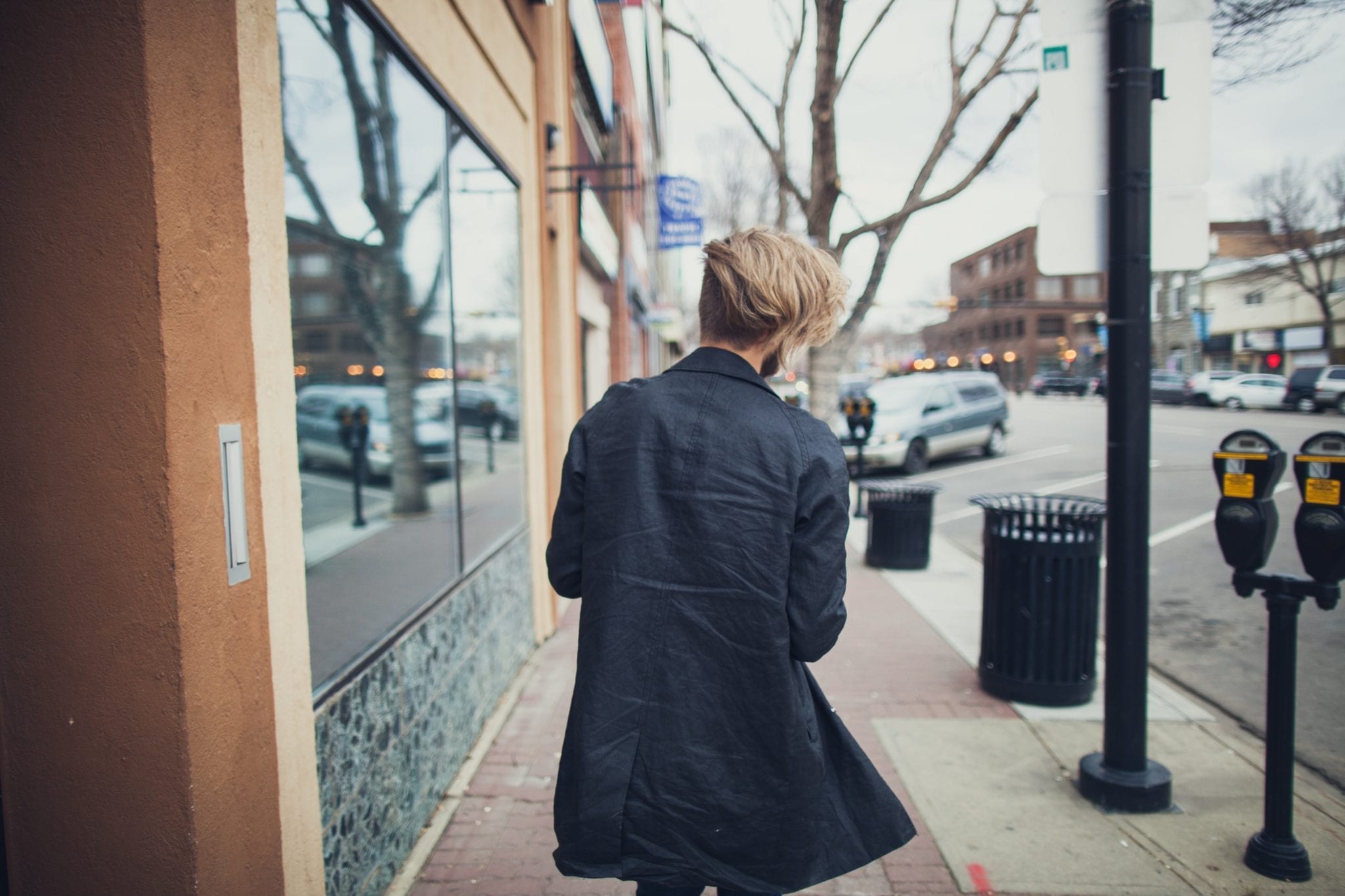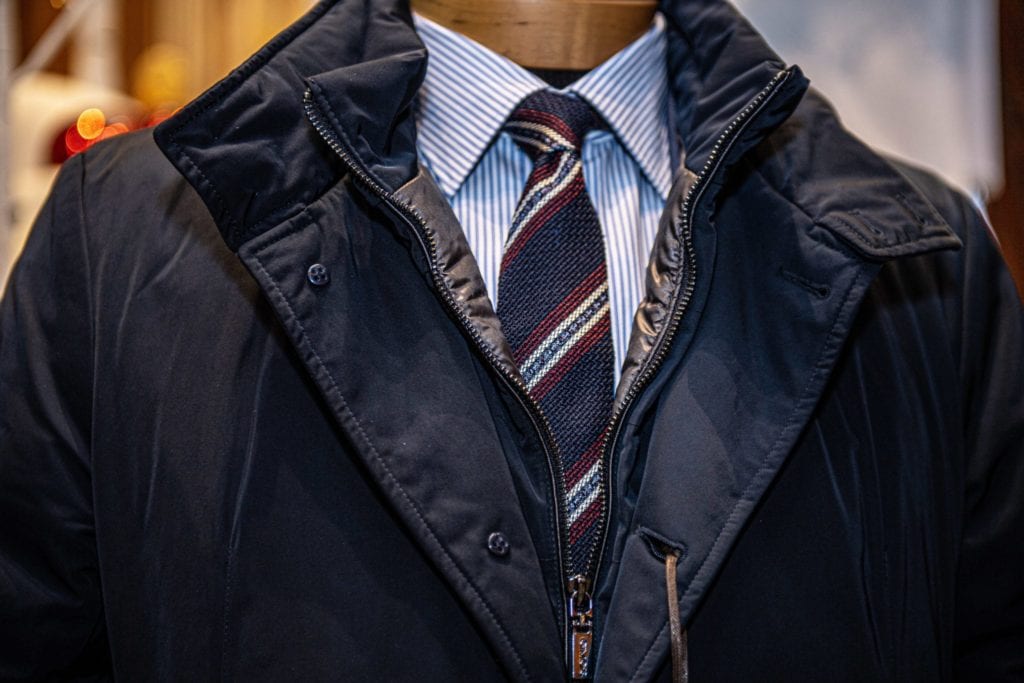The Men’s Guide to Winter Coats

One of the big questions for your winter wardrobe is, which coats or jackets do I need?
Of course, the answer to this question depends on a few factors:
- How cold is it where you live?
- What will you be using it for?
- Does it need to be waterproof?
Winter coats come in a variety of cuts and fabrics, suited to different types of weather and levels of formality. For example, if you’re commuting to a business meeting wearing your suit, you’d want to top it off with a coat that matches the suit in terms of formality.
Here, we’ve put together a quick guide to men’s winter coats. You’ll find something for any occasion:
Winter coat tips
First of all, it’s worth bearing a few tips in mind when purchasing winter coats. They are often one of the more expensive items in your wardrobe, so it’s important to make a considered choice!
As tailors, one thing we will always advise is to ensure you get the right fit. Coats can look sharp when fitted well, but if they are too loose or too tight, they don’t look so good. One thing to remember about fit for winter coats is that you’re wearing them over the top of other clothes, so you should avoid anything that is a close fit in thinly-layered clothes. The best coats leave room for whatever you are layering underneath, but don’t come across as being too baggy.
You should have your sleeve length, chest and waist measured to ensure you get a coat that will be a good fit. Alternatively, see your tailor for custom fitting.
Body shape is another consideration when choosing your coat. If you are on the shorter side, coats that come down to the calves can swallow you up and emphasize your stature, whereas a coat that stops above the knees will be more flattering.
A good winter coat allows room for the clothing you wear underneath Share on XCoat fabric and quality
One of the most sturdy, long-lasting fabrics is pure wool (although this is also one of the most expensive fabrics). Wool is warm, moisture-resistant and flame-retardant, which makes it a great choice for winter coats.
Waterproof wool coats can come in a variety of types and lengths. They may come with a detachable hood and often have a quilted or insulated lining. You’ll find these coats for formalwear and for more casual settings.
There are also wool blends available, which combine wool with other fabrics such as rayon. Check the percentage of wool used – the more wool, the warmer the coat will be.
Nylon is a good choice for waterproof outerwear. Our tip is to look for coats that have a quilted or insulated lining for extra warmth. For business casual wear, proprietary fabrics such as Gore-Tex are also a good outerwear choice.
In terms of quality, look for sealed seams that prevent the wind from cutting through your coat or jacket. Coat collars should be designed so that you’re able to wear them up, further protecting you from the elements. Stitching should be of high quality with no loose threads or lining poking through.
Types of winter coats for men
Here are some of our picks for winter coats:
Top coats
You may have heard the terms top coat and overcoat used interchangeably, but in truth, they are similar, yet different types of coats. While an overcoat extends below the knees, top coats end before the knees. Both are designed to cover up your clothing and are usually more formal types of coats.
Lately, the traditional top coat is being worn shorter than prior years, allowing it to be a more versatile piece in your wardrobe. The shorter length (between hip and thigh) allows it to be worn with suits, sport coats or even vests or sweaters.
We suggest a good quality wool top coat as a wardrobe staple for formal wear, particularly in cold regions. You will sometimes see heavier versions of this coat referred to as a “greatcoat.” These may come in single-breasted or double-breasted cuts.
The single-breasted top coat is a wardrobe classic that pairs well with most ensembles due to its simplicity of construction. If you select a dark or neutral color, you will maximize your use of this coat, enabling it to be paired with your suit, or worn with jeans for informal occasions. A single-breasted coat also tends to suit most body types well, and will be flattering if the fit is tailored.
Waterproof nylon coat
Almost everyone needs a waterproof nylon coat of some type, so we’ve given this coat its own section. They may come with or without a hood and often have a removable wind barrier in the chest area. For winter in chilly areas, look for a quilted lining and warm fill to insulate the body from cold.
The Gimos waterproof storm coat shown below is an example of a jacket that is a good choice for casual wear. A stylish and versatile piece, the coat has a waterproof shell and a removable chest wind barrier.

You might also see waterproof nylon coats in parka, raincoat or trench coat styles, with various weights and levels of warmth. If you live somewhere relatively mild over winter, but contend with rain, something like the Canali Raincoat can be a versatile choice, able to be worn over your suit without looking out of place.
Trench coat
The trench coat dates back to the First World War, when it was designed to be worn in the trenches by British troops. The famous version of the coat was designed by Thomas Burberry and made from his own gabardine fabric. This fabric was designed to be lightweight and weatherproof – the coat soon became part of everyday wear.
Trench coats are double-breasted and feature epaulettes, storm flaps at the shoulder, wide lapels, buttoned pockets and a waist belt that cinches with a buckle. They are traditionally worn long, down to the shins, although may also be found slightly shorter.
You can wear a trench coat with your suit and look dapper in slightly warmer climates, with the added benefit of waterproofing for wet weather. Choose a neutral or dark color for maximum versatility.
Top off your look
Here in the Northeast, we’re used to frigidly cold temperatures over the winter months. Your overall comfort and style will be added to if you top off your winter coat selection with good scarves and gloves.
Our Angora Scottish fringed scarves can add warmth and interest to an outfit, while a good pair of leather gloves are smart for any occasion.
Final thoughts
Winter coats are not only a necessity, they can add some stylish versatility to your warm wardrobe.
Consider the weather that you need to dress for and the level of warmth. Look for timeless styles such as the top coat, pea coat or trench coat, and make sure you have something for casual wear in inclement weather.
Lastly, get the fit right! Remember, your coat is worn over other clothing so should accommodate that, but shouldn’t be overly baggy.

